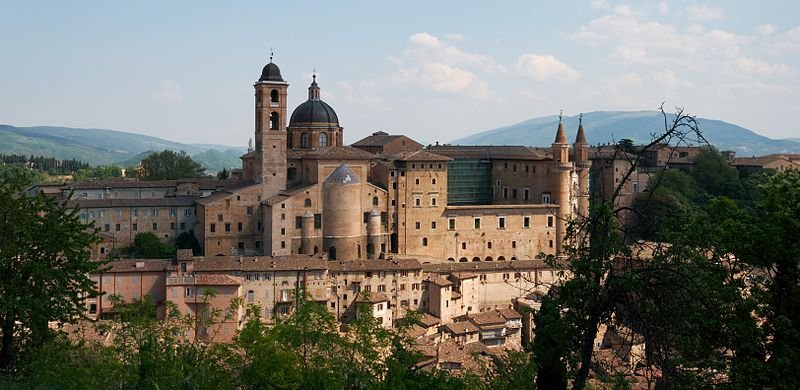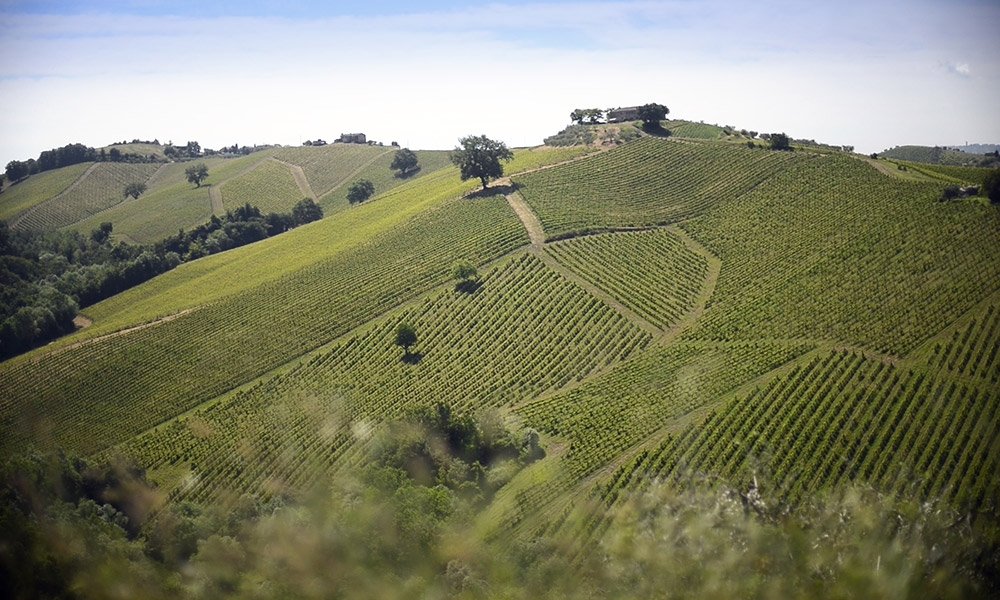Marche: a quick history
Marche, more properly Le Marche, The Marches, is one of Italy’s 20 Regions. Located on the eastern side of the Peninsula of Italy, the land spills steeply down from the spine of the Apennines to the Adriatic sea.
The name originates from the term “mark” or march” used by the Carolingian and later Holy Roman Empires to denote a borderland (Denmark, the Danish March, Austria (Ostmark, the Eastern March), the Spanish March, Charlemagne’s name for the Catalonian borderlands), in this case, the southern borderlands of the Holy Roman Empire during the middle ages.
The district was originally settled by the early Italic tribe of the Picentes, and the region was conquered and absorbed by Rome in 295 BC, who named it Picinum (today’s Piceno). Invaded by the Goths as Rome fell around 475 AD, the region became part of the Byzantine Exarchate of Ravenna. After the conquest of the Exarchate around 750 by the Lombards, the region was then annexed by Charlemagne in the late 700s. Over the next couple centuries, the various Marches (Ancona, Camerino, Fermo) were established on the fringe of the Empire.
The district resisted absorption by various nominal rulers including the Empire, the Republic of Venice and the Papal States throughout the Middle Ages, and was for centuries an independent maritime republic and later the independent Duchy of Urbino, which itself merged into the Papal States in 1631. After a short stint as Napoleon’s short-lived Republic of Ancona, followed by return to Papal rule, the district acceded to the new Kingdom of Italy by plebiscite in 1860
Le Marche
Marche: the terroir
The region is one of steep hills and narrow valleys. Except for a narrow coastal strip, the land rises quickly to a hilly plateau of several thousand feet elevation, and from there up into the high Apennines at over 8.000 feet. Soils are limestone/marl based with rich alluvial deposits in the valley floors.
The climate is temperate near the coast with rare frost, but inland in the higher elevations it is quite continental with hot, humid summers and icy cold winter weather. The lower hills and intermontane valleys are prime viticultural land: the region boasts some 47,000 acres of vineyards spread over four provinces with 13 DOC zones, five DOCG zones, and one IGT. Total production is about 18 million cases of wine annually.
The Citadel of Urbino
ciu ciu
Founded in 1970 by Natalino Bartolomei and his wife Anna, the estate is today managed by their sons Massimiliano and Walter. The name Ciù Ciù, which means “drink, drink” in the local dialect, is Natalino’s nickname. The estate is fully organic and has been since inception. The brothers produce a range of both red and white wines from their hillside vineyards mostly in the Piceno DOC, including Offida DOCG, Marche DOC, Piceno & Piceno Superiore wines, Lacryma Morro di Alba, and others.
Ciu Ciu’s vineyards in Piceno
The wines
Offida Pecorino DOCG “Merlettaie”: Named for the famed Offidane lace makers he last witnesses of an ancient and precious art whose origin is lost in time; this wine is 100% Pecorino, an austere and powerful variety relegated for decades to barren and steep mountain slopes of the Piceno Apennines.
Rediscovered in the past several decades by a few passionate winemakers, the grape produces a rich and flavorful white with good acidity and excellent mouthfeel.
Grown on a clay/limestone/sandy soil, at 1000 ft elevation, the wine is pressed and then fermented over 6 months on its lees in mid-sized oak barrels, then aged in glass for 3 months before release. Straw-yellow with notes of wild herbs and hawthorn flower and a persistent finish.
Rosso Picino DOP “Bacchus”: A blend of Montepulciano and Sangiovese grown in the towns of Acquaviva Picena and Offida, province of Ascoli Piceno. Sandy/lime soils at 750-1000 ft elevation.
Fermentation in stainless for 10 days with daily punchdowns to increase structure and extraction. 6 months maturation in stainless before bottling, then 3 months in bottle before release. Deep violet on release tending towards brick-red as it matures.
This wine shows best after a year or two in the bottle. Harmoniously complex, vinous-fruity, floral. Well-structured tannins and full body. In the best years and conditions, maturation gives it greater balance and softness. Produced from a careful hand-selection of the best grapes in the vineyards.
Evoe Passerina Marche IGP: Made from 100% Passerina grapes, an ancient native vine of the Marche region. Produced from vineyards in the towns of Acquaviva Picena and Offida, province of Ascoli Piceno. Grown on sandy lime soils, at 750-1100 ft elevation on steep slopes. Vinified and aged for several months in temperature-controlled stainless steel before bottling.
Elegant and very balanced wine of straw yellow color with delicate golden reflections. On the nose notes of peach, melon and white flowers carry through on the palate, with ample mouthfeel and very long aromatic finish.







